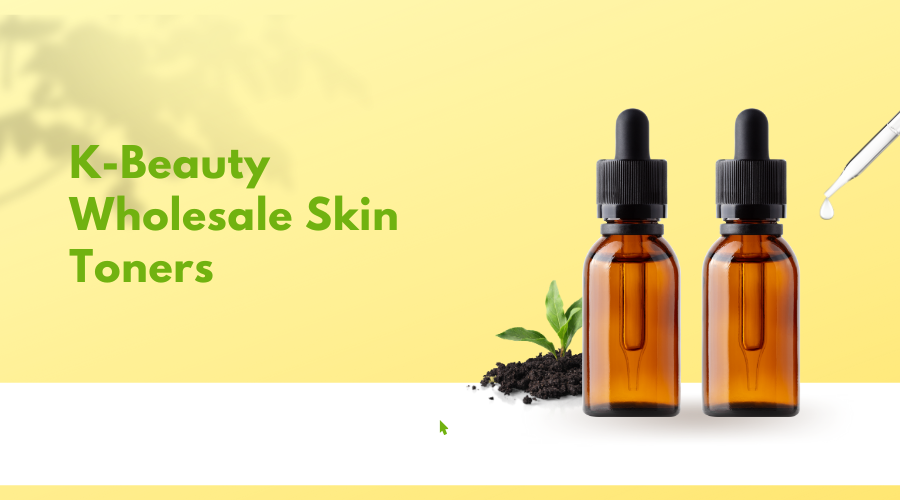Facial Scrubs: How They Actually Work
- healthybeautykr
- Apr 24
- 4 min read

There’s something super satisfying about that fresh, smooth feeling after using a good facial scrub. But have you ever stopped to wonder what’s actually happening beneath the surface of your skin? Well, you’re in for a treat. Today, we’re diving deep into the science behind facial scrubs, how they work, and why your skin loves them (when used right).
What Is a Facial Scrub?
A facial scrub is a skincare product that helps exfoliate , a fancy word for removing dead skin cells from the surface of your skin. These scrubs often contain tiny particles or beads that physically slough off dry, flaky skin. Some also include chemical exfoliants, but we’ll get into that later.
Think of it like this: Your skin is constantly renewing itself, but sometimes the old cells don’t get the memo. That’s where a facial scrub steps in.
Your Skin 101: Understanding Cell Turnover
Your skin isn’t just sitting there looking pretty — it’s busy working 24/7. The outermost layer, called the epidermis, is always producing new skin cells and pushing out the old ones. This process, called cell turnover, usually takes about 28 to 40 days (it slows down as we age).
When dead skin cells pile up, they can clog pores, dull your complexion, and mess with your skincare routine. That’s why exfoliating with a facial scrub can feel like a mini-reset button for your skin.
How Do Scrubs Actually Remove Dead Skin?
Let’s get technical for a second. Most facial scrubs rely on mechanical exfoliation, which means you’re physically rubbing off the dead skin using abrasive particles. These particles could be:
Sugar or salt crystals
Crushed walnut shells
Microbeads (though many are now banned due to environmental concerns)
Bamboo powder or jojoba beads
When you massage the scrub into your skin, the particles lift away the dead skin layer, revealing brighter, smoother, and more radiant skin underneath.
The Role of Ingredients:
Sure, the scrubbing particles do the heavy lifting, but a good facial scrub also contains supporting ingredients that help soothe, hydrate, or treat your skin. Common additions include:
Aloe vera for calming
Glycolic acid or salicylic acid for extra exfoliation
Vitamin E for hydration and protection
Essential oils for added skin benefits and fragrance
These ingredients work together to make sure your skin isn’t just exfoliated — it’s pampered.
Chemical vs. Physical Scrubs: What’s the Difference?
While physical scrubs rely on texture to exfoliate, chemical exfoliants use acids or enzymes to dissolve the bonds between dead skin cells. Here’s a quick breakdown:
Physical exfoliation (scrubs): Works instantly by buffing away dead skin.
Chemical exfoliation (AHAs, BHAs): Works over time, penetrates deeper, and can be evener.
Many modern scrubs actually combine both for a double-action effect. That means you get the satisfying feel of a scrub plus the skin-renewing power of acids.
What Happens After You Exfoliate?
Now that the dead skin is gone, your fresh, new skin is ready to absorb all the goodness from your serums, moisturizers, and sunscreens. Exfoliating helps:
Unclog pores to prevent acne
Brighten dull skin
Even out texture and tone
Enhance absorption of skincare products
It’s like clearing the path so your skincare can actually do its job.
How Often Should You Use a Facial Scrub?
Here’s where a lot of people go wrong. Over-exfoliation can cause irritation, redness, or even tiny tears in your skin barrier. So, how often is ideal?
Oily or acne-prone skin: 2–3 times a week
Normal skin: 1–2 times a week
Sensitive or dry skin: Once a week or less
Always listen to your skin — if it’s red, tight, or itchy after scrubbing, scale back.
Choosing the Right Facial Scrub for Your Skin Type
Not all scrubs are created equal. Picking the right one for your skin type makes all the difference. Here’s a quick guide:
Sensitive skin? Look for fine, rounded particles like jojoba beads and soothing ingredients like chamomile.
Oily skin? Go for scrubs with salicylic acid or charcoal to deep-clean pores.
Dry skin? Choose creamy scrubs with added moisturizers like shea butter or coconut oil.
Combination skin? A balanced scrub with mild abrasives and hydrating properties is ideal.
Facial Scrubs and Acne: Friend or Foe?
This one’s tricky. A gentle scrub can help prevent breakouts by keeping pores clear, but harsh scrubs can actually worsen acne. If you have active breakouts, avoid rough exfoliants and opt for something gentler — or switch to a mild chemical exfoliant.
Pro tip: Never scrub inflamed pimples. You’ll only make them angrier!
What to Do After Scrubbing Your Face
After you’ve exfoliated, your skin is more sensitive and vulnerable. Here’s your post-scrub checklist:
Rinse with lukewarm water — hot water can strip the skin
Apply a soothing toner or essence to balance your pH
Moisturize to lock in hydration
Don’t forget SPF! Fresh skin is more prone to sun damage.
Bonus Tip: Don’t Forget Your Lips!
Yes, your lips need love, too. A lip scrub made with sugar and honey can remove flaky bits and leave your pout ultra-smooth. Follow with a hydrating balm, and you’re golden.
Conclusion:
So, there you have it, the full breakdown of how facial scrubs work. When used properly, a facial scrub is more than just a skincare step , it’s a science-backed way to keep your skin looking and feeling its best. Whether you're battling dullness or breakouts or want that fresh-face glow, the proper scrub can be a game-changer.
Remember: not all scrubs are created equal, and your skin will always tell you what it needs. Treat it kindly, scrub wisely, and let your natural glow shine through.



Comments